Turning Information Green
- By Michael Fickes
- 11/01/15
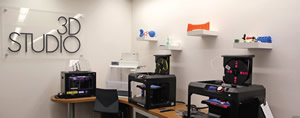
PHOTOS COURTESY OF ADELPHI UNIVERSITY
Does your school’s sustainability program include campus IT operations? Many colleges and universities do not. Those that do not are missing a tremendous opportunity to reduce the impact that IT operations have on the environment and an even greater opportunity to cut costs.
By including IT in a small college sustainability program, a school can save literally tens of thousands of dollars. Larger institutions with multiple campuses might save hundreds of thousands of dollars.
Look at what Adelphi University has done with its sustainable IT program. “We have taken a holistic approach to sustainability,” says Carol Ann Boyle, deputy chief information officer in Adelphi’s Office of Information Technology. “Our overall sustainability program includes a major IT effort.”
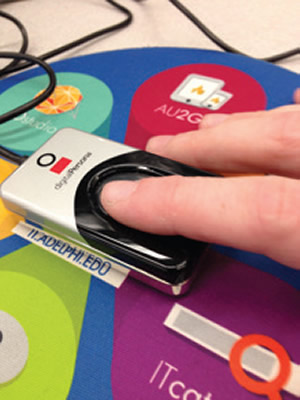
PHOTOS COURTESY OF ADELPHI UNIVERSITY
ON THE CLOCK. Adelphi University has eliminated the use of time cards. Everyone signs in and out of assigned jobs quickly and easily with a fingerprint scanner.
Adelphi University is a private, nonsectarian university located in Garden City in Nassau County, NY. Adelphi also has Centers in Manhattan, Hudson Valley, and Suffolk County. The Adelphi sustainable IT program has significantly reduced power consumption across the entire IT organization, from server farms through computing equipment to replacement and end-of-life repurposing and disposal.
While the savings haven’t been monitored methodically, there have been spot checks. For instance, when the IT department started powering down the campus computer labs at night, the university monitored the savings and came up with $100,000 in the first year. Presumably that has continued.
In fact, reducing energy consumption ranks as the chief green contribution that an IT program can make. Currently, Adelphi’s IT department uses just 8 percent of the total power used by the university.
Adelphi began turning its campus IT system green back in 2005. “I would estimate that IT power consumption today is 20 percent to 30 percent lower today compared to when we started the program,” says Fred Hicks, director of network and systems in the university’s Office of Information Technology.
The department has been pouring its savings back into university coffers ever since.
The school’s green energy reduction IT program has touched most if not all of the components of the campus IT organization, including servers, storage systems, computers, monitors, printers and even maintenance vehicles.
Server Savings
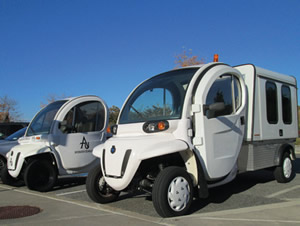
PHOTOS COURTESY OF ADELPHI UNIVERSITY
Servers, of course, serve files to laptop and desktop computers. Servers work in rooms filled with racks of servers, all whirring away and serving and storing data.
Server rooms use tremendous amounts of power. Over the past decade, server manufacturers have developed energyefficient models, and Adelphi has installed those models as it refreshes the school’s server reservoir.
In addition, IT people have figured out how to slash server power requirements with a technique called virtualization.
“A server is a computer with a high-end, high-capacity processor,” says Hicks. “If one server is only carrying out one task, it is probably only using five percent to 10 percent of its processing power.”
Software can transform the unused server memory into virtual or additional software servers. In so doing, Adelphi’s server farm became a garden, moving from 120 real servers to six real servers housing virtual servers adequate to the university’s needs.
Remote Shutdown
Adelphi IT has more than 750 computers in classrooms, libraries and campus common areas in Garden City, Long Island and Manhattan Center in SoHo. The IT department can access each computer remotely, and schedules each to shutdown at appropriate times.
Some of the computers turn off an hour after the end of the day’s classes. Others, located in common areas such as the libraries, University Center and the Underground Café, shut down when the facilities close for the night.
In a side note, the computers in the area of the library called “The Info-Com” — the largest student computer lab at Adelphi — are open for extended hours. Solar panels on the facility’s roof provide power for the library, and several are dedicated to powering “The Info-Com.”
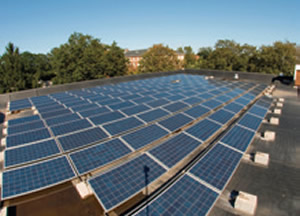
PHOTOS COURTESY OF ADELPHI UNIVERSITY
JUST WHEN YOU THOUGHT IT COULDN’T GET ANY GREENER. Adelphi University’s IT department uses electric-powered vehicles to transport computers and other equipment throughout the campus. Also, solar panels on the roof of the largest student computer lab on campus provide power for the university’s library, and several are dedicated to powering the computer lab itself.
The remote shutdown process also includes ten collaboration studios in the libraries. Each studio provides collaborative screens and ports for eight students to plug in their devices.
According to Hicks, the university has also begun to experiment with smart power strips in the library. “The power strips can be programmed to turn themselves off after hours,” he says.
The remote shutdown of campus computers adds to the savings created by modern computer designs. “Computer equipment in general uses less power today,” says Hicks. “In the past, the average desktop computer had a 250-watt power supply. Today’s desktops have power supplies that draw between 75 and 90 watts — about two-thirds less power.
“In fact, lower-power devices are available across the board today.”
Today’s new monitors, for instance, use much less power than traditional cathode ray tube, or CRT, monitors. Adelphi is replacing old CRTs with new energy-efficient flat-panel LCD screens, which use one-half to twothirds of the energy required by the CRTs.
More Green Ideas

PHOTOS COURTESY OF ADELPHI UNIVERSITY
Adelphi has taken additional steps to green up its electronic profile. “In the library, we phased out the copying center and replaced photocopying machines with scanners,” Hicks says. “Students scan materials to memory sticks or drives and turn pages into PDFs. That saves paper.”
While Adelphi hasn’t eliminated photocopying machines altogether, the university has generally made them more difficult to find and instituted a quota system. “We used to provide students with all of the photocopying they wanted,” Boyle says. “The cost was covered by student fees. Today, we have limited the number of free copies per semester to 500 pages. Students that go over the limit must pay per copy.
“We also recycle copy paper in our Early Learning Center. As long as the paper doesn’t contain confidential information, we drop it off there and the children use it for coloring and crafts.”
Another paper-saving idea involves forms. Adelphi has put all of its forms online. Students, faculty and staff now fill out and submit all necessary forms electronically.
The university has also gotten rid of time cards. Today, everyone signs in and out with a thumbprint.
In yet another innovation, Adelphi’s campus maintenance crew no longer drives gas-powered vehicles. “Our technicians use electric vehicles to move around campus today,” Hicks says.
Disposing of Electronics
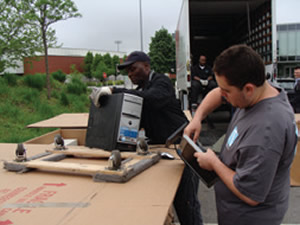
PHOTOS COURTESY OF ADELPHI UNIVERSITY
The IT department sees to it that old equipment is disposed of with care. “We partner with qualified vendors when we sunset equipment,” Boyle says. “We check certifications and visit sites, to make sure that our equipment isn’t being tossed into the ocean or shipped to an environmentally questionable place.
“Our vendor of choice hires adults with special needs who take the equipment apart and whenever possible refurbish it.
“We partner with our vendor on the other side and help to sell the refurbished equipment to students, faculty and staff who might want an old computer.”
In the end, Adelphi has spent ten years learning and practicing sustainable IT techniques. The quality of the university’s practices were recognized in 2008 by Computerworld magazine in its inaugural “Best Practices in Green IT” Awards program, which identified and acknowledged excellence among early adopters and industry leaders in the green IT movement. Adelphi has only improved its greening skills since then.
This article originally appeared in the issue of .